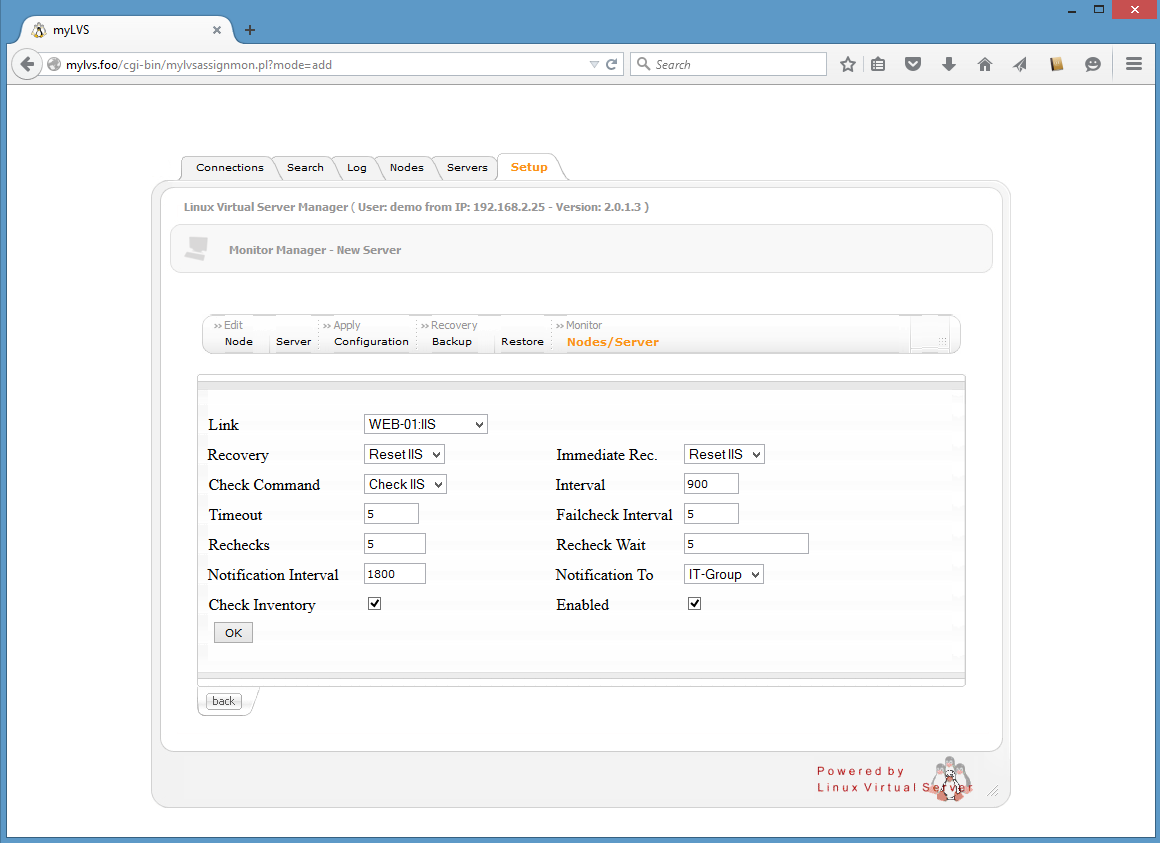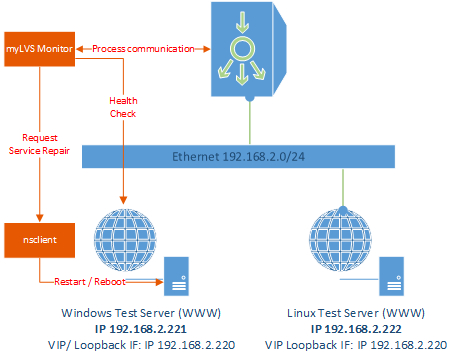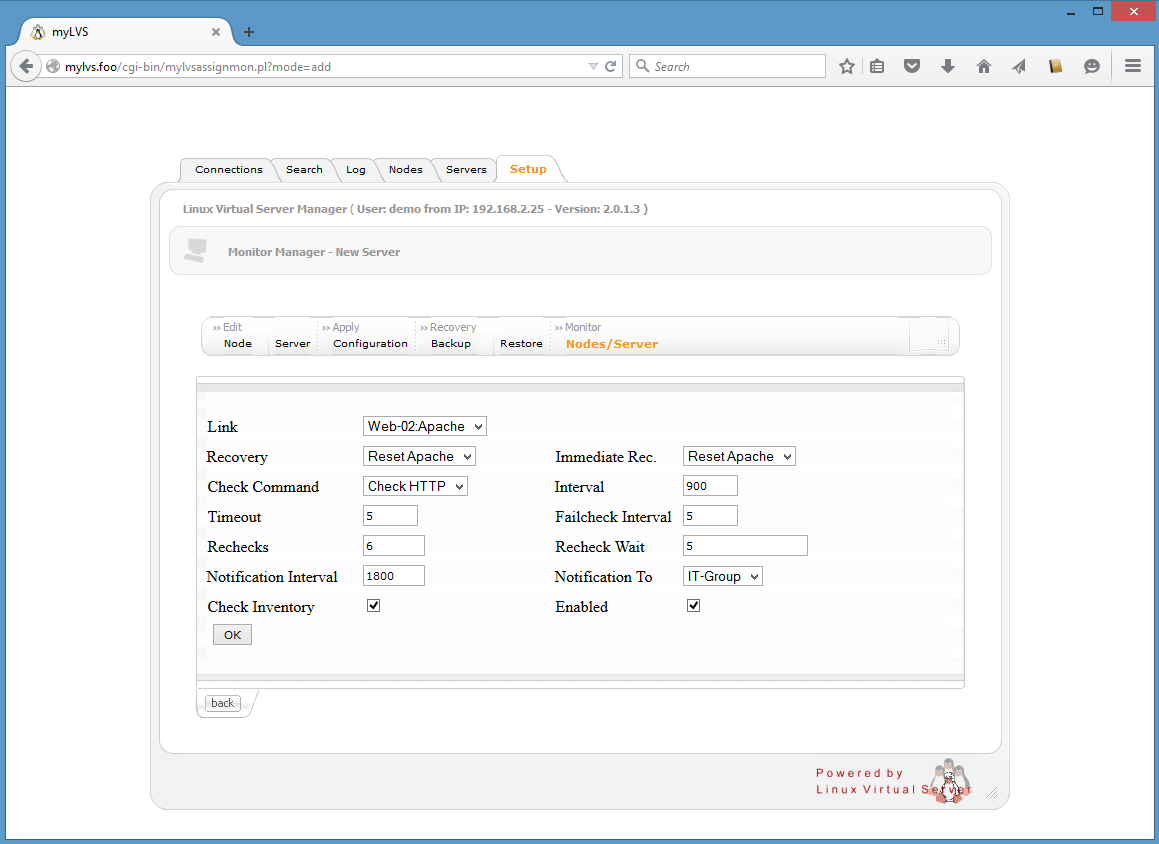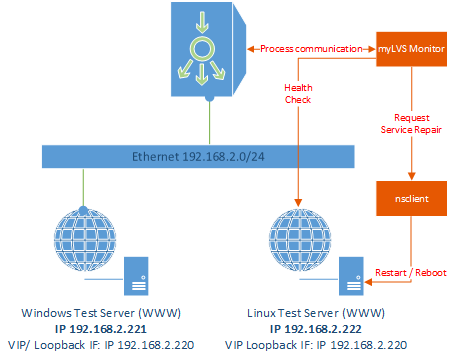Setup myLVS Monitoring: Difference between revisions
Jump to navigation
Jump to search
No edit summary |
No edit summary |
||
| Line 1: | Line 1: | ||
Setup myLVS Monitoring allows you to check the Real Server (RS) state, it can be configured to run additional auto repair scripts in case a failaure was detected.<br> | Setup myLVS Monitoring allows you to check the Real Server (RS) state, it can be configured to run additional auto repair scripts in case a failaure was detected.<br> | ||
Note that additional steps might be required: [[SQL database setup# | Note that additional steps might be required: [[SQL database setup#myLVS Monitoring prepare|myLVS Monitoring prepare]]<br> | ||
You may involve the systemctl scripts to start or stop the myLVS daemon. | You may involve the systemctl scripts to start or stop the myLVS daemon. | ||
Revision as of 16:26, 7 September 2015
Setup myLVS Monitoring allows you to check the Real Server (RS) state, it can be configured to run additional auto repair scripts in case a failaure was detected.
Note that additional steps might be required: myLVS Monitoring prepare
You may involve the systemctl scripts to start or stop the myLVS daemon.
Restart as needed:
root@mylvs01:/# systemctl restart mylvsmon.service
Or
root@mylvs01:/# systemctl start mylvsmon.service root@mylvs01:/# systemctl stop mylvsmon.service
See the log:
root@mylvs01:/# less /var/log/mylvs/mylvslog.log
Doc1
|
Goto Setup/Server and then to Monitor Nodes/Server, click add and fill as shown: |
Description of the above screen
|
|
Doc2
|
Goto Setup/Server and then to Monitor Nodes/Server, click add and fill as shown: |
Description of the above screen
|
|



